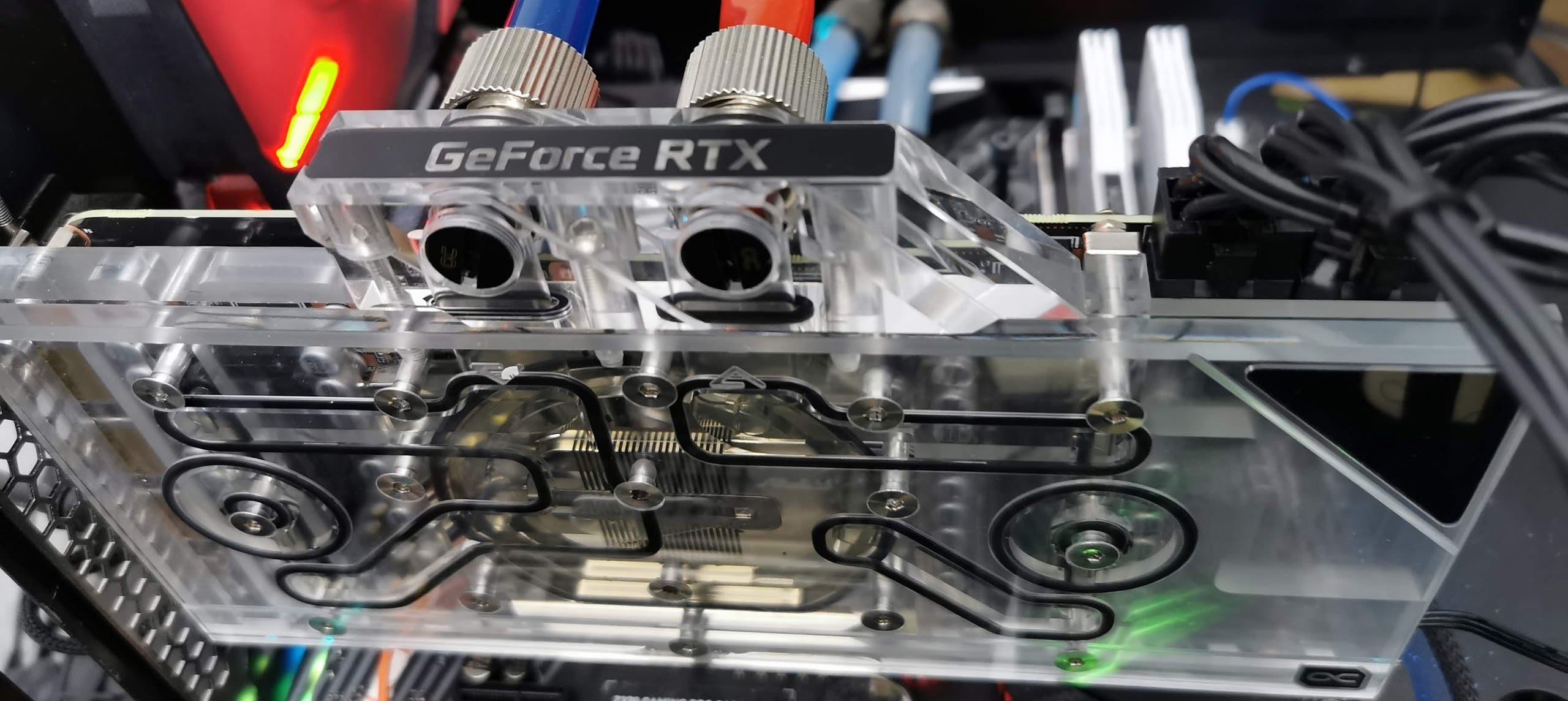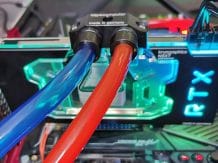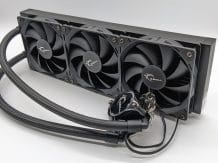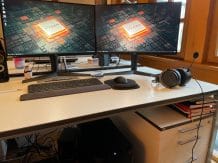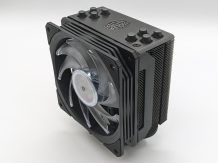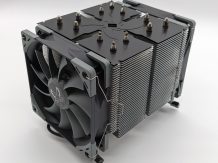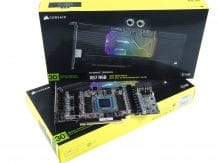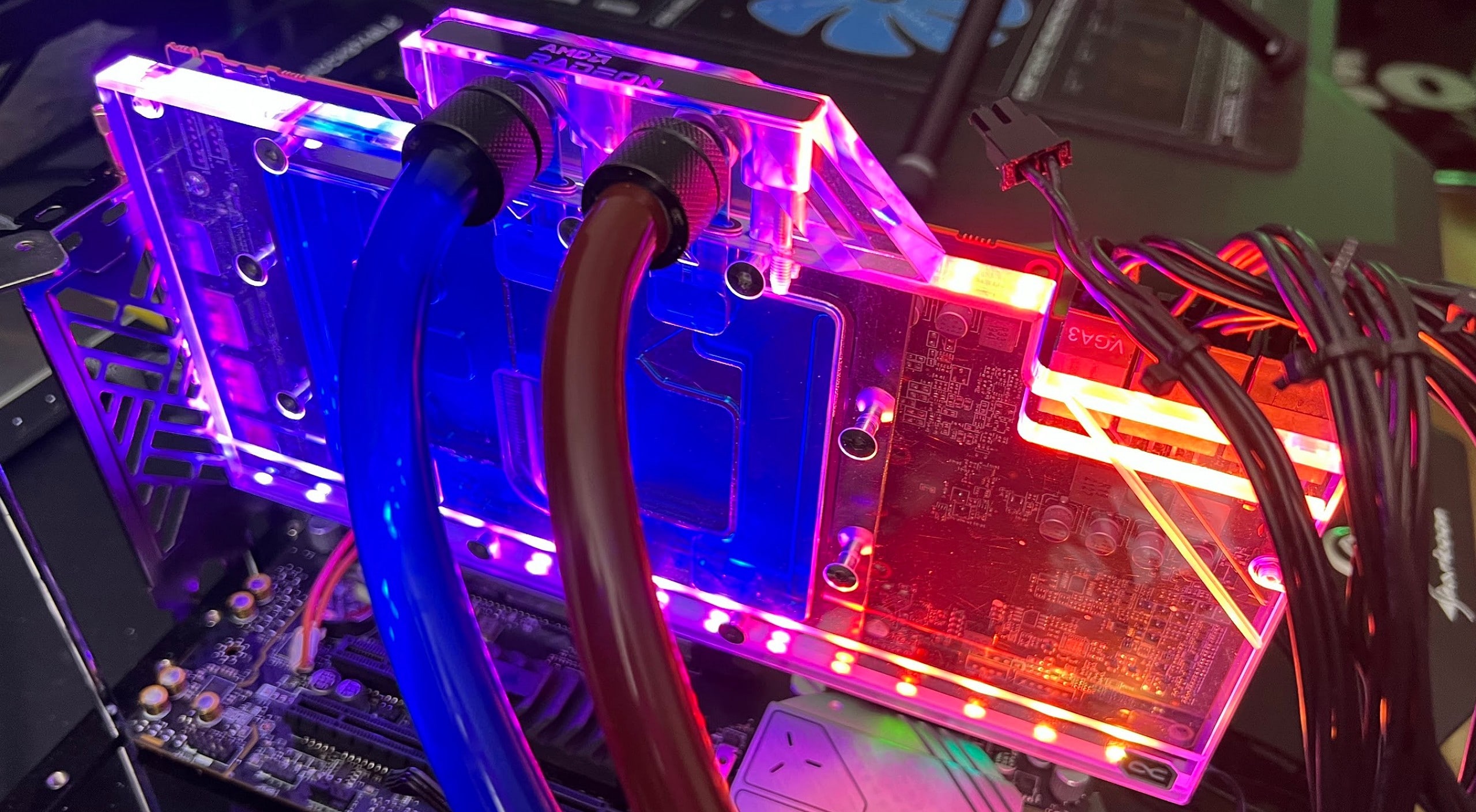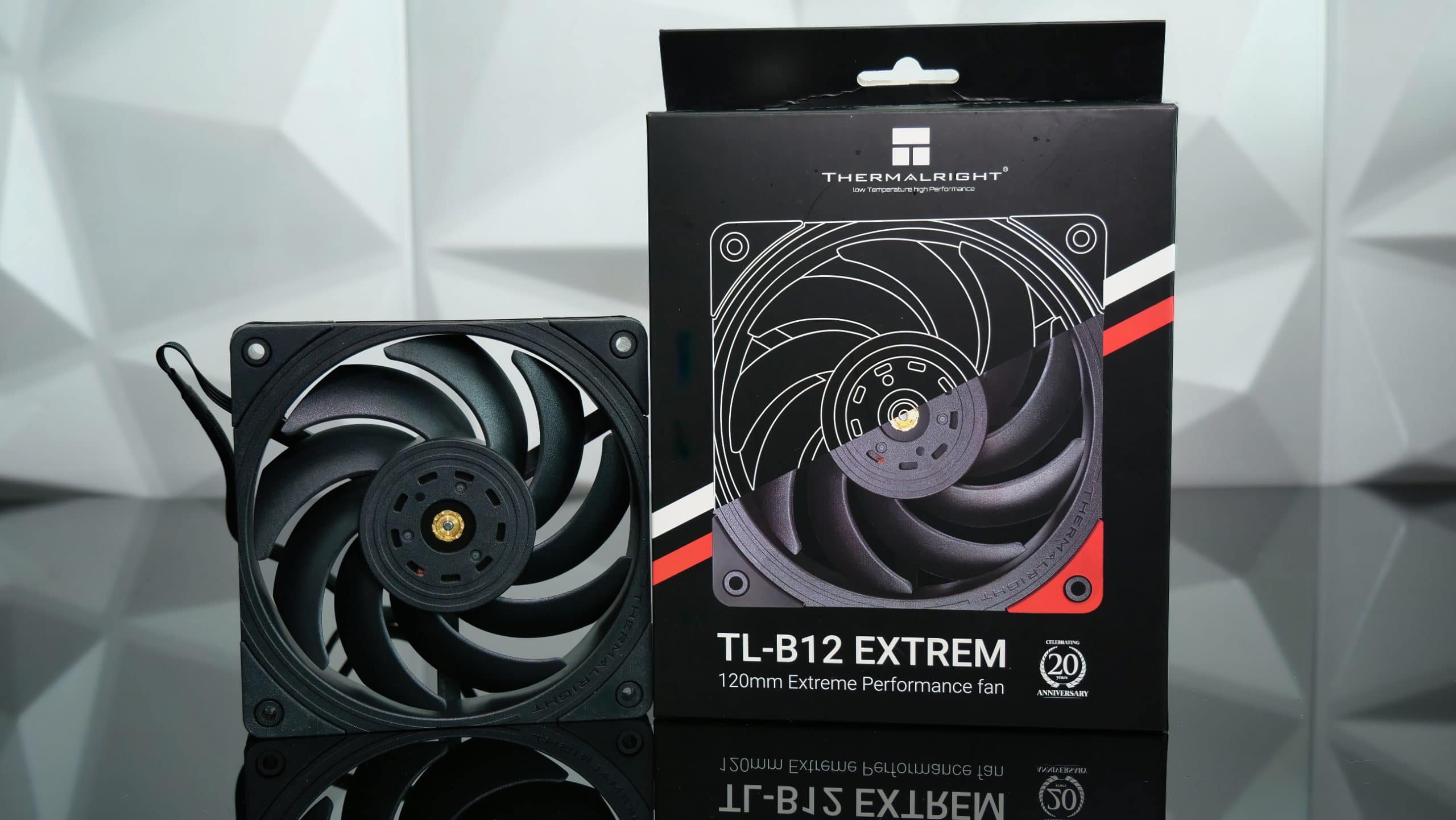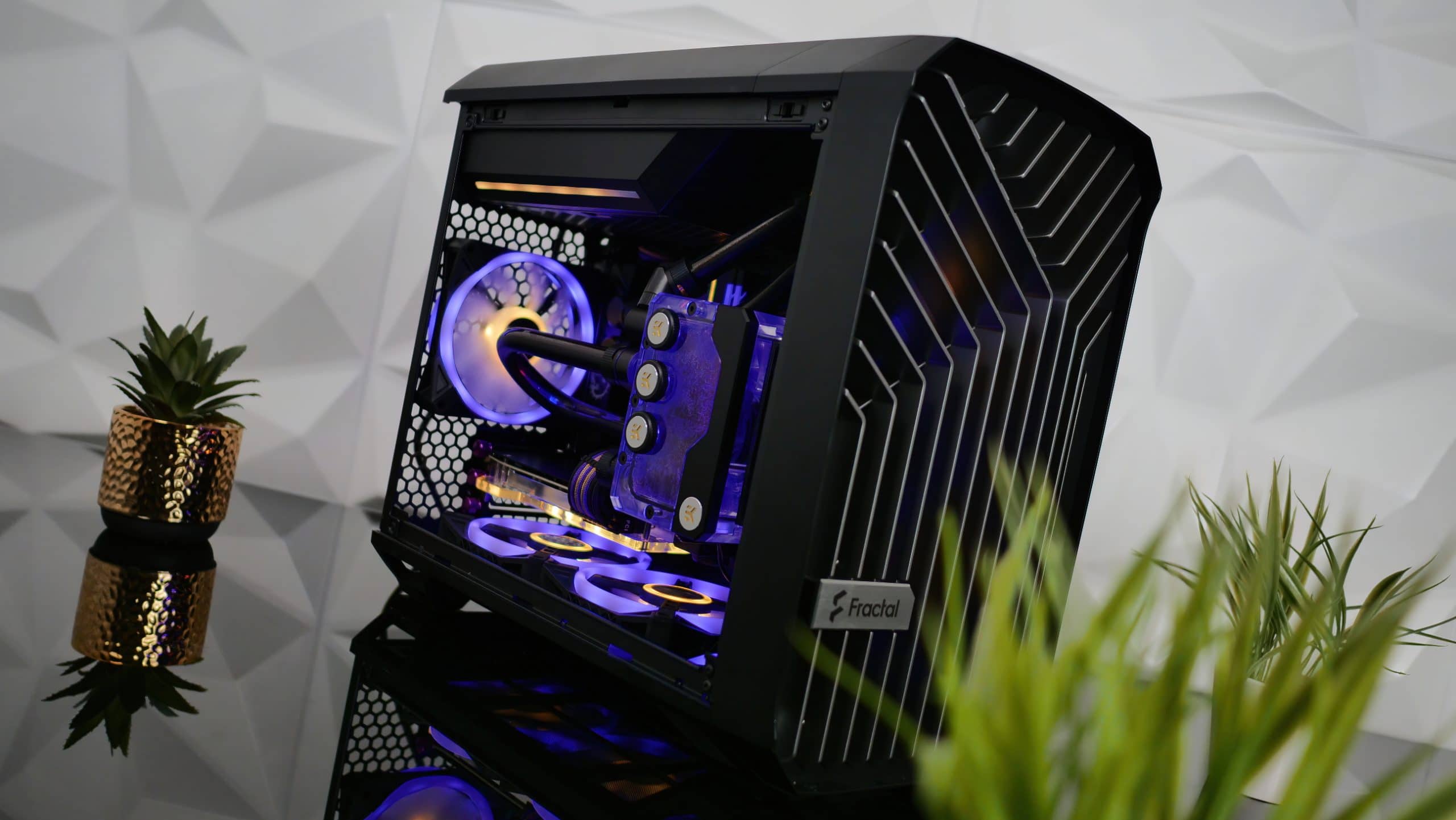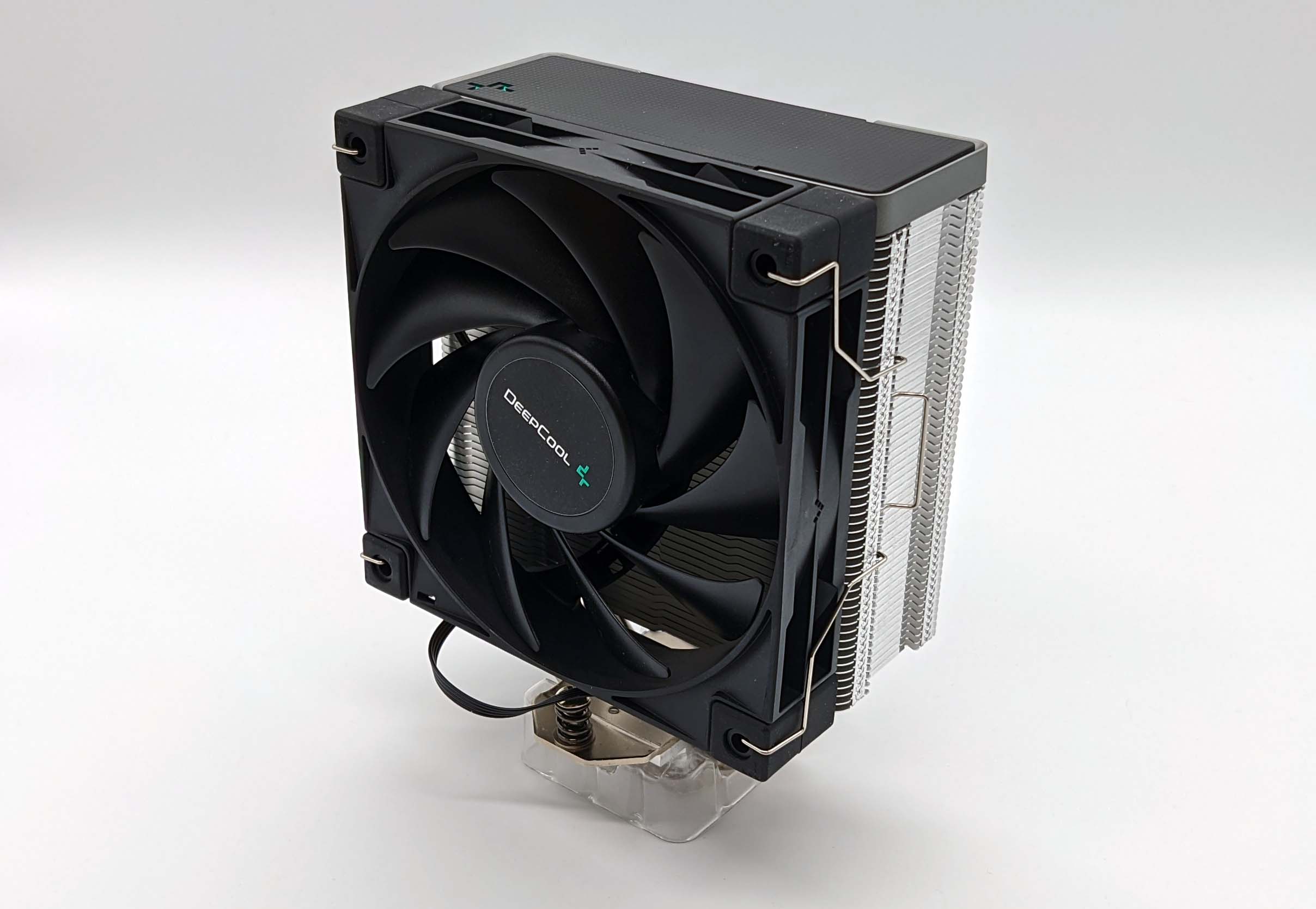Alphacool Eisblock Aurora Plexi GPX-N for RTX 3080 and 3090 in the test – 340 watts ice cold brought to the GeForce point
With the Alphacool Eisblock Aurora Plexi GPX-N RTX 3090/3080 I want to start the new round of GPU water blocks, but this time for amps and not Turing. Water cooling makes sense with power losses over 300 watts and creates real added value. Let’s start now with the Alphacool product that was available to me as the first model, the rest of the possible things will come later.
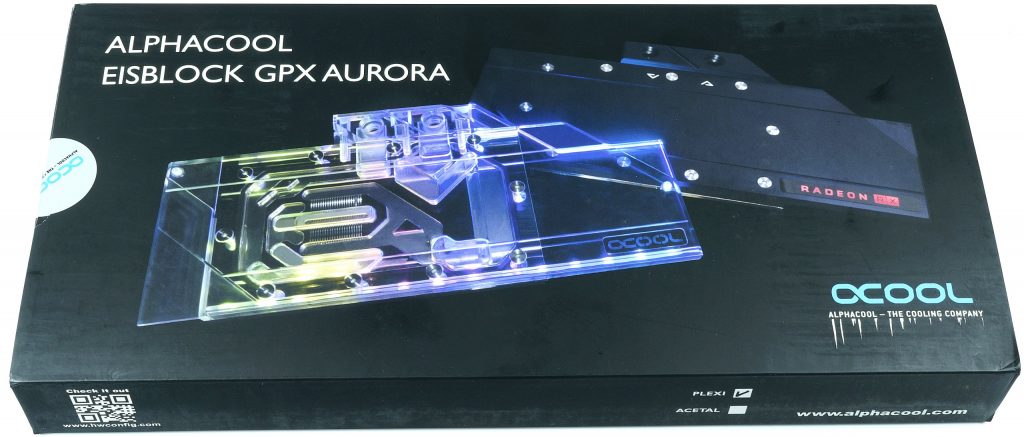
Scope of delivery and unboxing
The manufacturer has fundamentally revised the cooler compared to its predecessor, which you will clearly notice later in the test, but I don’t want to spoil it. The edge design of the Plexi front is not new, only the rest has been redesigned from scratch. But let’s unpack all the fun first. What you get for just under 127 euros is a pre-assembled cooler with terminal including embedded 5V aRGB strips and a matching preci-dip adapter, a backplate with cooling function, two rimless plugs, screws, thermal pads and thermal paste. The manual is available in printed and digital form, exemplary.
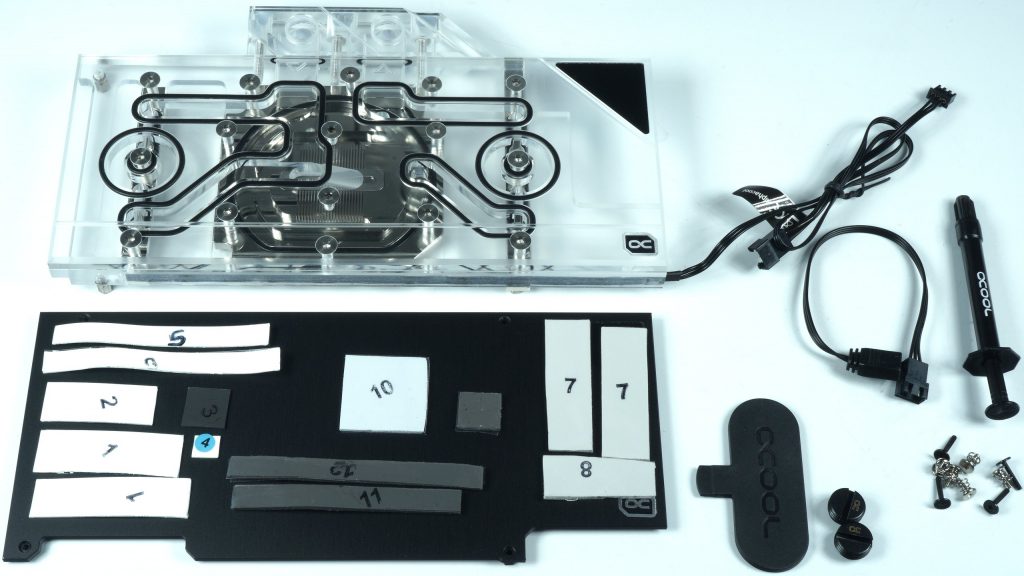
Which finally brings us to the water block. Alphacool has killed two birds with one stone. Because you want to use the design in an adapted form for the Founders Edition (which is not the reference design this time!), You would not have been able to get there problem-free even with the previous 7 mm for the copper thickness, because, for example, the 5-pin connector for the Original cooler is higher and could only be spared poorly. So, based on the circuit board layout, the decision was made to cleverly divide the cooling surfaces into three parts instead of using 12 mm copper, which would also have made the cooler pointlessly heavy. This division even made it possible to use 5.5 mm thick copper, which, however, does not save costs due to the additional effort involved in creating the individual parts and assembly, but at the same time opens up new design variants.
What looks strange here has a method. The focus is on the large cooling block for GPU and memory. To thermally decouple that from the voltage converters makes perfect sense. The injection takes place in the middle above the GPU after the smaller VRM block has been cooled in the direction of the slot cover. The circuit, which is now divided into two, goes on the one hand via the storage tank back to the outlet and in a second channel via the larger of the two VRM blocks. Here Alphacool had to make a compromise in order to minimize the pressure loss and not reduce the flow so much. In the end, it works quite well, but exactly this point doesn’t really look record-breaking in terms of the final voltage converter temperatures.
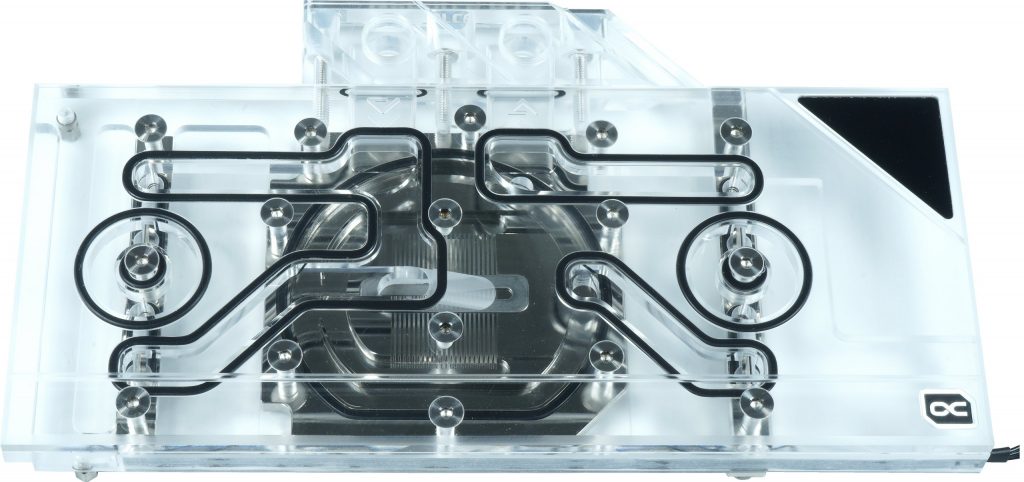
The back shows the use of materials very clearly. Due to the thinner material, the GPU can determine the base area, the slightly lower memory modules have an increase that allows the use of 1 mm thick pads. This is where the super-soft pads with a crumble factor are used, which can be adapted to almost any thickness below a millimeter without pressure. Since the packages of the GA102 chips vary extremely in height, an even lower pad thickness would ultimately cause more problems than benefits. But more on that in a moment.
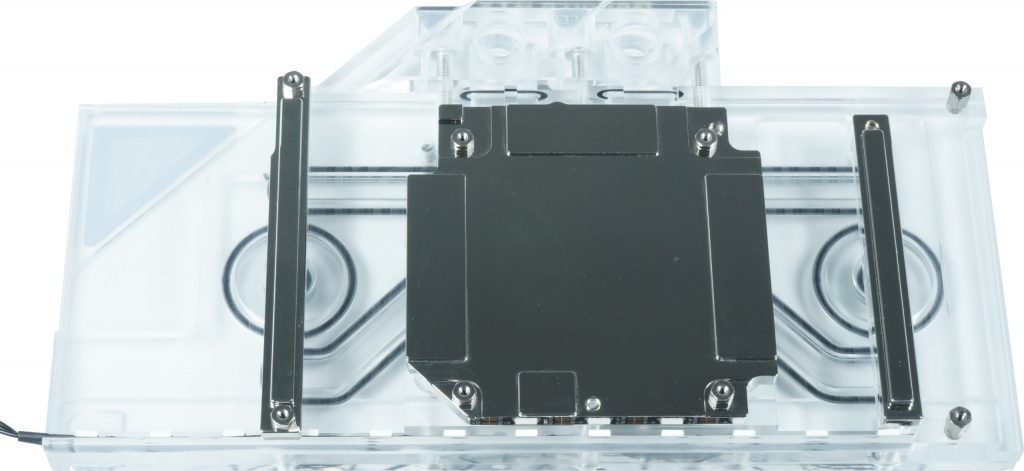
The water block is 22.49 cm long, 12.14 cm high and 2.55 cm thick. Nickel-plated electrolytic copper is used as the material and the cooling fins are 0.6 mm thick. Unfortunately, there is no information on the width of the sewer and the remaining floor thickness. The lid is made entirely of acrylic and the angular corners reflect the rays of the aRGB light strip nicely back and forth, so that the result is a fairly colorful, large-scale image. This is of course a matter of taste, as always.
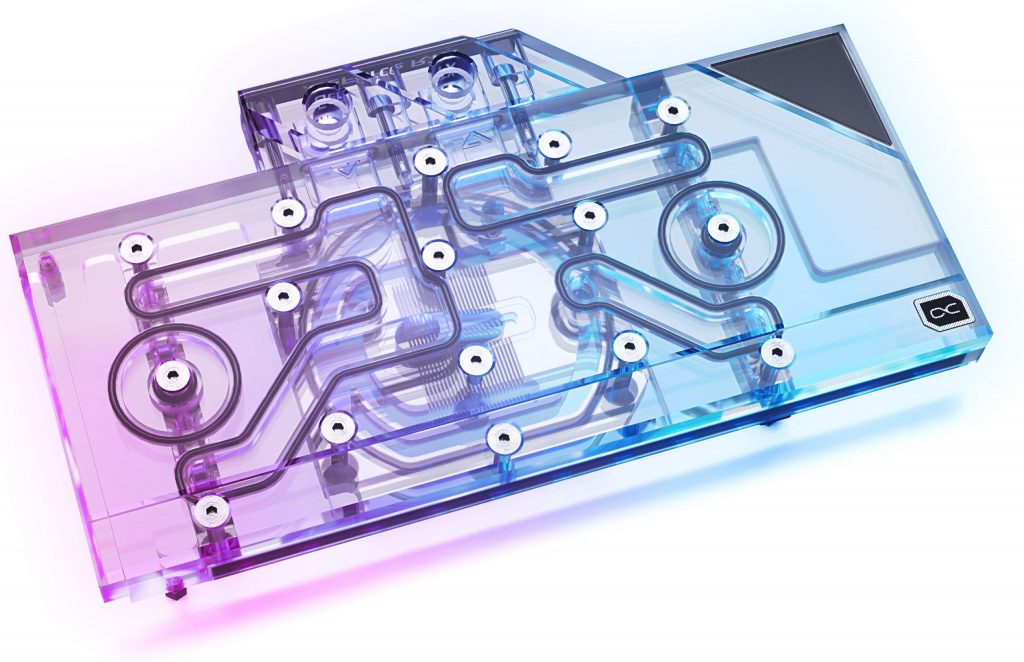
The backplate is included in the scope of delivery and is required, especially with the GeForce RTX 3090, to cool the RAM modules on the back. If you use an RTX 3080, you should leave out the pad below the BGA and the bottom of the memory assembly on the front as a test and ONLY cool the areas below the hot voltage converters. This can help not to misuse the backplate as a thermal bridge to the cooler areas.
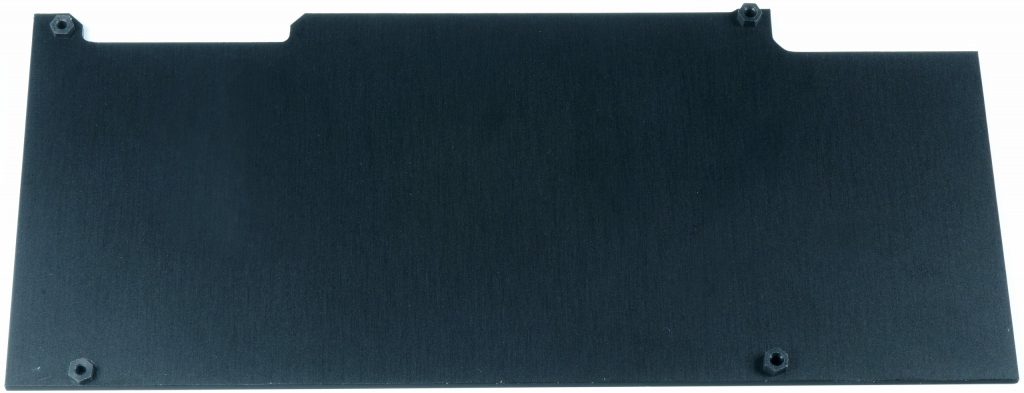
Selection of the test card and general problems when using the GA102
The requirements are similar to Turing, even if this time I decided on a 340 watt setup and a very special GeForce RTX 3080, because it was almost impossible to find an RTX 3090 in the reference design especially for these cooler tests and also to get a card that is in the middle of the tolerance range for the package heights. There will have to be an extra review in due course, but in fairness I would like to wait for NVIDIA to answer.
If you have cleaned the PCB as usual, you should first test it with the thermal pads attached to the cooler, but WITHOUT thermal paste, by laying it on and seeing whether anything is tilting or there is not too much air between the circuit board and spacers. If the distance is greater than approx. 0.2 mm, you will have a problem with screwing because it could bend the board excessively. For such a case, I recommend 0.1 to 0.2 mm thick spacers made of acrylic or impregnated hard cardboard.
These spacers can be fixed to the spacers with superglue (do not smear into the threaded openings!). Then you put the circuit board on and apply light pressure with your fingers (ground beforehand and ideally use gloves) on the four points of the GPU mounting. Then you remove the board again. If no slight marks can be seen in the pads for memory and VRM, you have to use thicker pads (approx. 1.5 mm) or layer 1 mm + 0.5 mm and repeat the process.
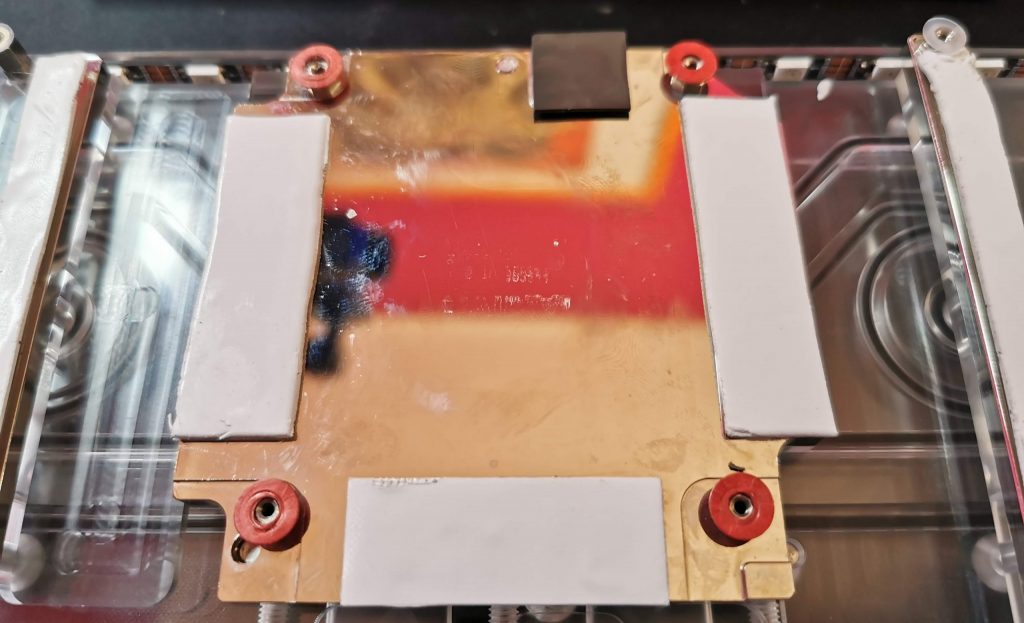
I also have an important word to say about thermal paste, because this time it’s not that easy. Either you take the very popular, very thin Kryonaut and risk the paste running slowly out or away through the curvature of the chip and package, or you are better off using an at least equivalent, but more viscous paste, which then stays there, where it was applied. For this reason, I rely on Alphacools Subzero, which has also enabled me to have another Kelvin less in the delta between the water and the GPU sensor.
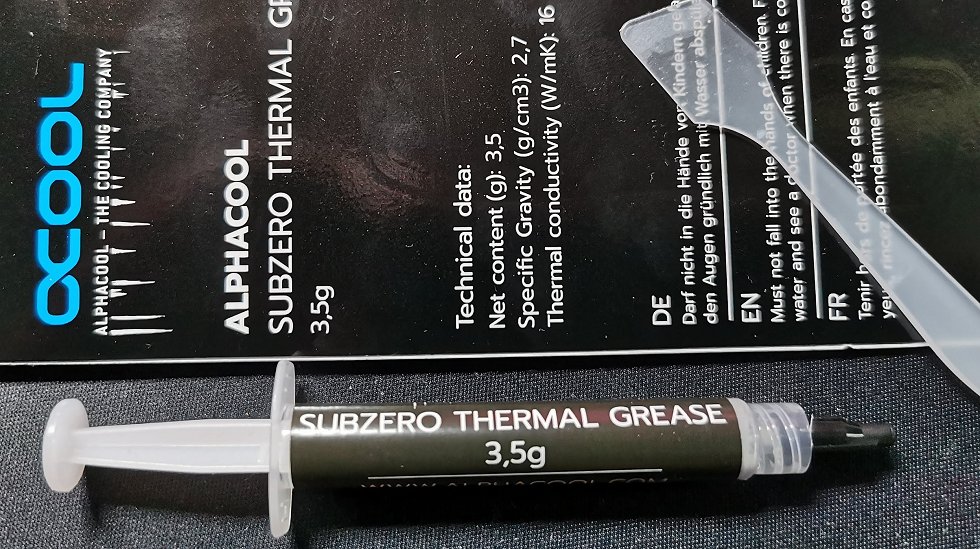
Then you screw the whole thing together, connect the hoses and you’re done.
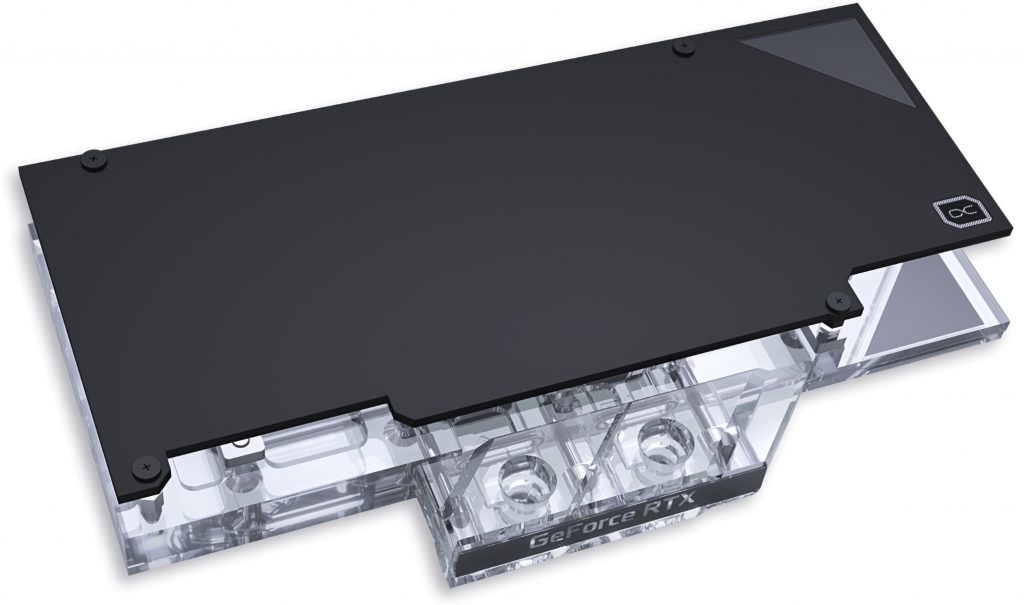
For those interested, I have simply attached the manual as a PDF here, and the rest of the successful water fight is described there
Manual
- 1 – introduction, functionality, assembly
- 2 – test results and conclusion





